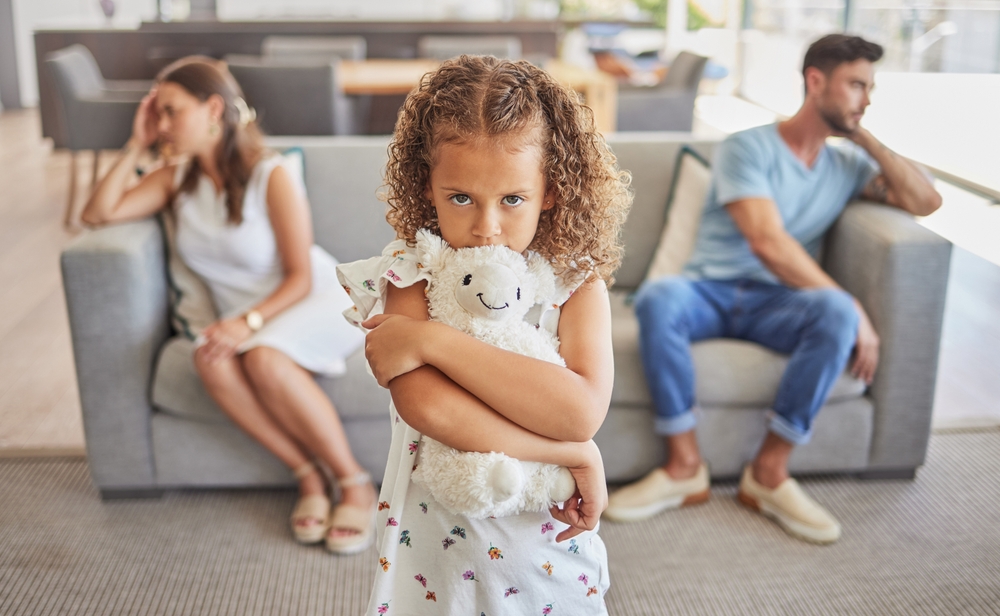When a child dies by suicide, the shock is immediate—but the warning signs are often not. That was the case for Autumn Bushman, a 10-year-old girl from Roanoke, Virginia, whose sudden death devastated her family and community. Her parents have since come forward to share what they saw, what they missed, and what they want other families to know.
Their story isn’t just about one child. It’s about the growing number of young kids facing emotional distress, bullying, and mental health challenges long before most adults expect it. As suicide rates among children rise, understanding what to watch for—and how to respond—has never been more urgent.

Subtle Behavioral Changes Often Signal Bigger Problems
Autumn Bushman was known for her boundless energy. At home, she was constantly in motion—cartwheels across the living room, full of life and noise. But in the weeks before her death, her parents noticed that something had shifted. She began sleeping more than usual, her bright personality became subdued, and her clothes turned darker. These weren’t dramatic outbursts or cries for attention. They were quiet, gradual changes that hinted at an emotional struggle her parents didn’t fully understand at the time.
These types of shifts are easy to dismiss. Parents may assume their child is tired, moody, or “just growing up.” But when changes in behavior stack up—especially when they replace a child’s typical patterns—they can indicate deeper psychological distress. Autumn’s mother, Summer, recalled how her daughter’s usual spark was fading. It wasn’t just a passing phase. It was a significant change in her demeanor that, in hindsight, was a red flag.
Part of the emotional burden Autumn carried may have stemmed from her experience with bullying. She had a reputation for defending classmates who were picked on, which unfortunately may have made her a target herself. Her parents reported the bullying to school administrators and were told the issue was being handled. But according to Autumn, the harassment didn’t stop. Her father, Mark, highlighted a troubling reality: the bullying wasn’t limited to school grounds. With access to devices like tablets and phones, the abuse continued at home through digital channels.
What Autumn experienced isn’t unique. Children today face a constant, often invisible, pressure—one that doesn’t end when the school day does. When parents start noticing emotional withdrawal, changes in mood, or altered sleep habits, these signs deserve immediate attention. It’s not overreacting. It’s being present. Early recognition can be the difference between getting help in time and missing a crucial opportunity to intervene.

When Bullying Doesn’t Stop—And Why That Matters
Bullying is not new, but the way it shows up in kids’ lives today is very different from even a decade ago. Autumn Bushman’s parents did what most would do when their child reported being targeted—they went to the school. Administrators told them the issue was being handled, but Autumn continued to say otherwise. This disconnect is not unusual. Many parents are led to believe there’s resolution when, in reality, the problem hasn’t stopped—or has simply moved out of view. What Autumn’s case highlights is how easy it is for bullying to persist under the radar, especially when the primary source isn’t a single confrontation, but a pattern of targeting that slips through institutional cracks.
According to the CDC, bullying is linked to increased risk of depression, anxiety, and suicidal behavior in children and adolescents. When kids feel unsafe at school—or anywhere they’re expected to function normally—it affects more than just their mood. It can change how they see themselves, how they interpret their social worth, and how hopeful they feel about the future. For someone like Autumn, who stood up for others, being punished socially for doing the right thing may have made the emotional toll even heavier. It’s not just about name-calling or exclusion. It’s the deeper feeling of being isolated, misunderstood, and repeatedly unheard, even by adults in positions of authority.
Compounding the issue is the rise of around-the-clock digital communication. Autumn’s father made an important point: tablets and phones don’t turn off when school ends. This always-on culture means bullying can follow a child from the classroom into their home and even into their bedroom. Social media, group chats, and messaging apps have made it easier than ever for harmful behavior to persist with no adult oversight. In this environment, victims often feel there is no real escape. And unlike in-person bullying, which might be noticed by teachers or staff, online harassment is often invisible to parents unless the child speaks up—which many don’t, either out of shame, fear of retaliation, or the belief that nothing will change.
What this means is that traditional interventions—like notifying a school and assuming the issue is resolved—are no longer enough. Parents, educators, and caregivers have to be far more proactive. That includes checking in frequently, not just about school performance but about social dynamics and digital interactions. It means pushing past “everything’s fine” when the signs say otherwise. Autumn’s story is a heartbreaking reminder that even involved, attentive parents can miss what’s happening beneath the surface if the systems around them are passive, and the problem is allowed to fester out of view.

Why Kids Don’t Always Say They’re Struggling—and What Adults Often Miss
One of the most difficult truths about child and adolescent mental health is that young people often don’t have the tools—or the language—to explain what they’re feeling. Many won’t come right out and say they’re depressed, anxious, or overwhelmed. Instead, their distress shows up as behavioral changes: irritability, withdrawal, changes in sleep or appetite, declining grades, or even physical complaints like headaches or stomachaches. These symptoms are easily mistaken for typical growing pains. But as in Autumn’s case, they can be signs of something much more serious.
Research from the National Institute of Mental Health shows that suicide is the second leading cause of death among individuals aged 10 to 14 in the U.S. That statistic alone challenges outdated assumptions that children that young are not capable of suicidal thoughts. Dr. Lisa Horowitz, a pediatric psychologist at the National Institutes of Health, has stated, “We know that kids, even as young as 8, can think about and attempt suicide.” This underscores the importance of not dismissing mental health concerns based on age alone. Children may not always know how to express psychological pain, but they feel it—and they need adults to take notice and act on the signs.
Complicating things further is the way children often protect their parents from the full truth. They may downplay the severity of bullying or emotional distress because they don’t want to worry anyone, or they believe nothing can be done. In Autumn’s case, her parents were aware she was having a hard time, but they didn’t realize the extent of her suffering. That’s a reality many families face. Kids may appear “okay enough” to avoid raising alarm, even as they’re struggling deeply inside. And because parents can’t read minds, the burden falls on creating a home environment where ongoing, honest conversation about emotions is normalized—not just during crises, but routinely.
Waiting for a child to ask for help outright is a gamble. It’s far more effective to observe patterns over time and lean in when something feels off. That includes asking direct questions, listening without rushing to fix, and noticing when a child’s usual behavior shifts in a sustained way. Even when children can’t articulate what’s wrong, they’re often communicating through their actions. Adults just need to be paying close enough attention—and be ready to respond with seriousness and support.

What Parents and Caregivers Can Do—Real-World Steps That Make a Difference
Knowing what to look for is one part of the equation. The next is knowing how to respond in ways that actually help. Emotional distress in children often starts quietly, which means prevention and support need to be built into everyday routines—not reserved for when things reach a crisis point. Here’s what that looks like in practice.
Start with consistent, low-pressure conversations. Ask your child how their day really went—not just “Did you have a good day?” but “What was the hardest part of today?” or “Did anything happen that made you uncomfortable or upset?” The goal is to make talking about difficult emotions a normal part of life, not something that only happens when there’s a meltdown. Keep these talks casual and judgment-free. Kids are more likely to open up if they know you’re not going to panic or minimize their experience.
Watch for changes in behavior that stick. One rough day isn’t unusual. But if your child becomes more withdrawn, starts avoiding school, loses interest in hobbies, or their sleep and eating habits shift significantly, don’t assume it will pass on its own. These are often signs of deeper issues. If you’re unsure, trust your gut. Many parents later say they “sensed something was off” but didn’t act on it because they didn’t want to overreact. Take those instincts seriously.
Don’t underestimate the role of technology. Know which apps your child uses and how they interact online. Privacy is important, but so is safety. Social media and group messaging can expose kids to bullying and exclusion that parents may never see unless they ask. Periodically check in about their online experiences just like you would about their day at school. Questions like “Have you ever seen anything online that made you feel bad?” or “Is there anyone online who’s been bothering you?” can help surface issues before they spiral.

Lastly, if you notice warning signs or your child expresses any suicidal thoughts, don’t wait to get help. Contact a mental health professional who works with children. In urgent situations, call or text 988—the national Suicide & Crisis Lifeline—for immediate support. Acting quickly doesn’t mean you’re overreacting. It means you’re taking your child’s safety seriously.












Leave a Reply